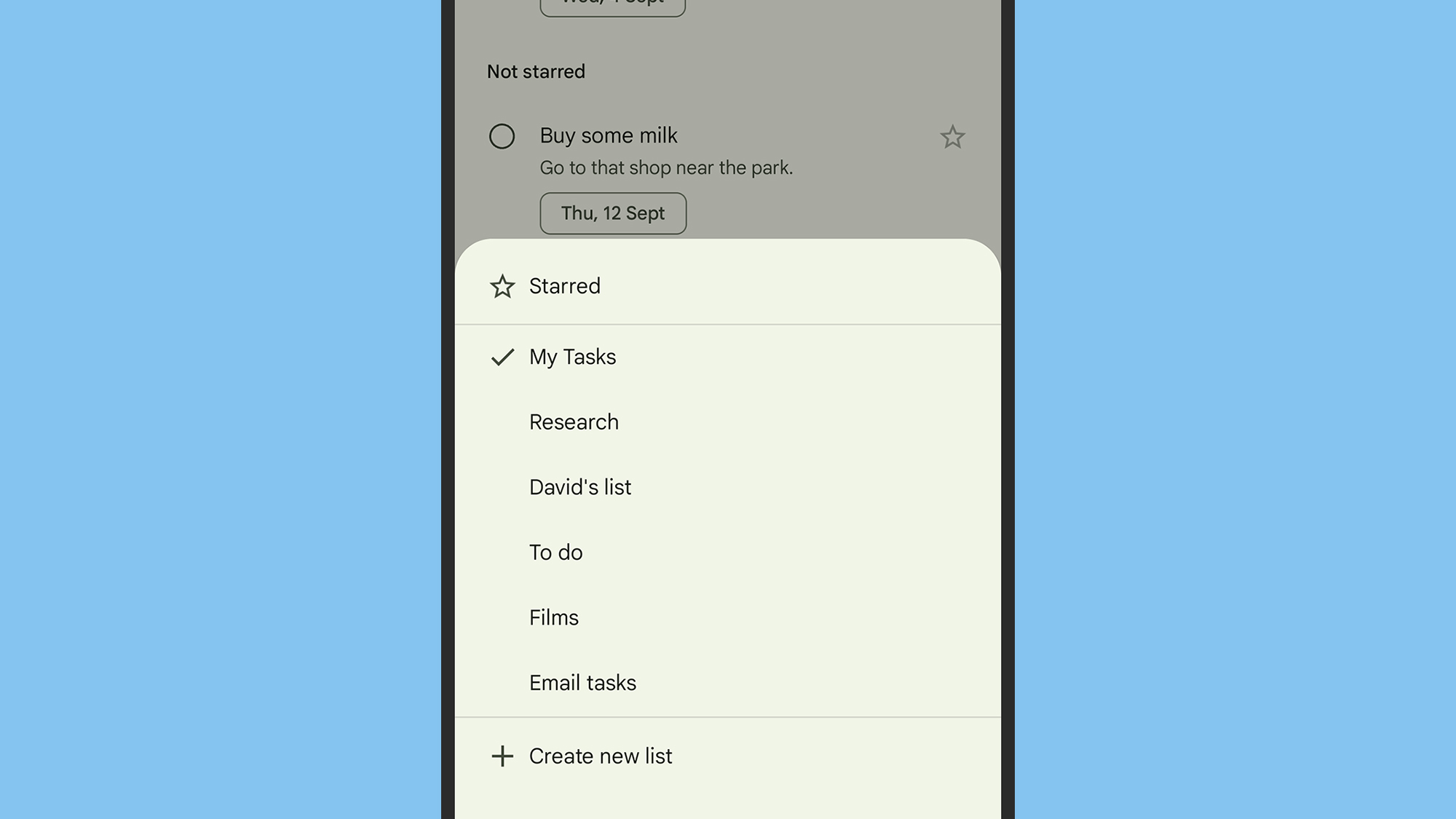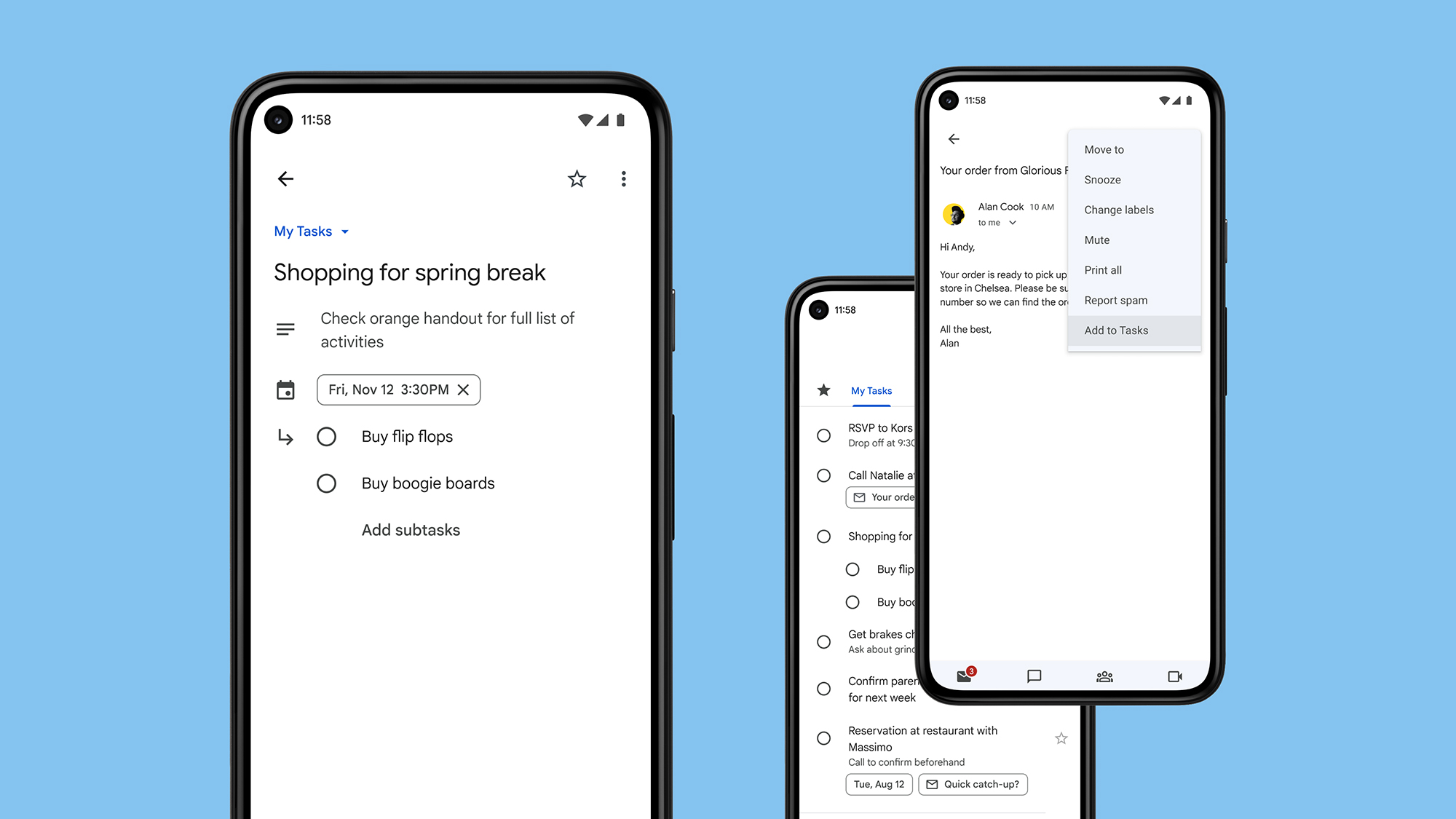Google Tasks can easily be overlooked in Google’s long list of apps and services. But this straightforward to-do-list manager is hugely useful, available across all of your devices, and improving all the time (including a recent redesign).
We’ve previously looked at how well Google Tasks integrates with Gmail, and here we’re going to take you through the features and tools at your fingertips with Google Tasks for Android and iOS. Get the app installed on your phone (if it isn’t already), sign in with your Google account, and you’re ready to go.
Getting started with Google Tasks
If you’ve never used Google Tasks before, you can get started with your very first task by tapping on the + (plus) button down at the bottom of the My Tasks tab:
- Give your task a name (like “buy some milk”).
- Tap the three line icon to add extra details (such as the best place to get your milk).
- Tap the clock icon to link a time and date to the task.
- Select the star icon to make this one of your starred tasks.
- Tap Save to create the task.
The task is created and added to your My Tasks list. If you want to make changes to it, tap on the task text—you can get to the same options again, if you need to add (or remove) details, or add (or remove) a time and date.
From the same screen you can add subtasks, which are exactly what they sound like: Smaller tasks within the main tasks that can be checked off one by one. To delete a task or subtask, tap the three dots (top right), then choose Delete.
When you’ve done something, just tap on the circular checkbox next to it, and it’s marked as completed. The task then moves to the Completed list, which you can expand with a tap if you want to remind yourself of the progress you’ve made. To delete all the tasks that are done with, tap the three dots at the bottom, then pick Delete all completed tasks.
Tap and drag tasks around to change their order in the list—or to change them from tasks into subtasks or vice versa. You can get at a few more options by tapping the icon showing two arrows (Android) or the three dots (iOS) at the bottom.
- Choose My order to set the order of tasks manually.
- Select Date to see the tasks grouped by date, with the dates closest to today at the top.
- Choose Starred recently to see tasks that have recently been starred at the top of the list.
You’ll notice your tasks are synced everywhere you’ve got Google Tasks installed, and can be edited from anywhere too—they’ll appear in the right-hand Google Tasks pane in Gmail on the web, for example.
Creating multiple lists

When you’re comfortable with the basics of Google Tasks, you can move on to creating multiple lists. You might have one list for shopping for example, and another list for DIY. You can use multiple lists in whatever way you like.
To create a new list, tap the icon showing multiple lines in the bottom-left corner, then pick Create new list:
- Give your name a list (such as “research tasks”), then tap Done.
- A new list is created—tap the three dots underneath it to find the Rename list and Delete list options.
- You can change the order of lists, but only on Android: Tap the lists icon (bottom left), then tap and drag on a list to move it.
Lists are shown up at the top of the Google Tasks interface, and you can swipe across to scroll through them. Get to the far right of your lists, and there’s a New list option, which gives you another way to create a new list.
This gives you much more flexibility when it comes to creating your tasks and subtasks. You’ll notice if you tap on a task to view its details, you can then tap on the drop-down menu at the top to change the list it’s in.
Each list has its own separate tasks and completed tasks, though starred tasks across all lists can be found by tapping on the star icon to the left of the lists tabs. You might want to use this to manage important tasks across all your lists.
Each list comes with the same options for ordering the tasks on screen, and again all your lists sync across all of the devices where you’ve got Google Tasks installed, and can be edited from any device.

